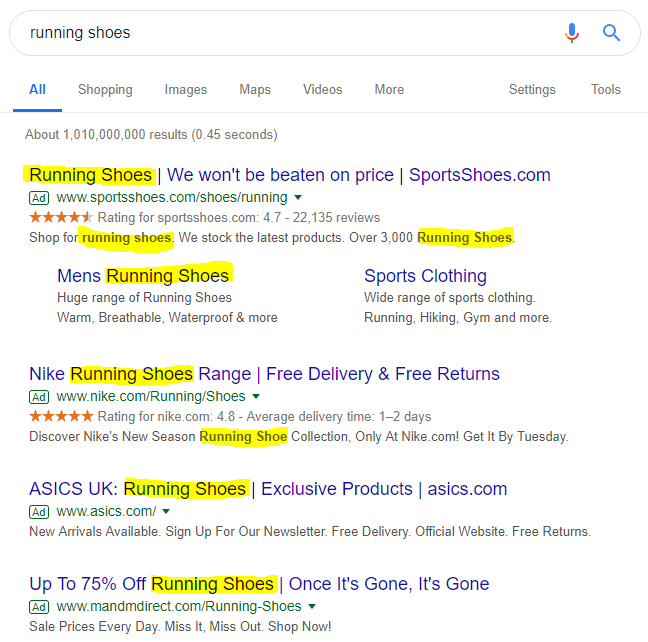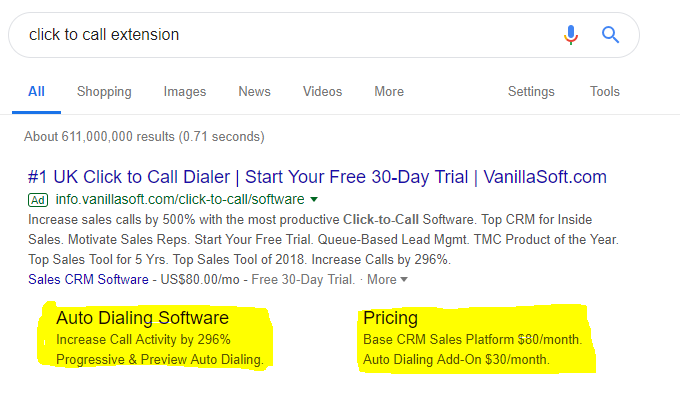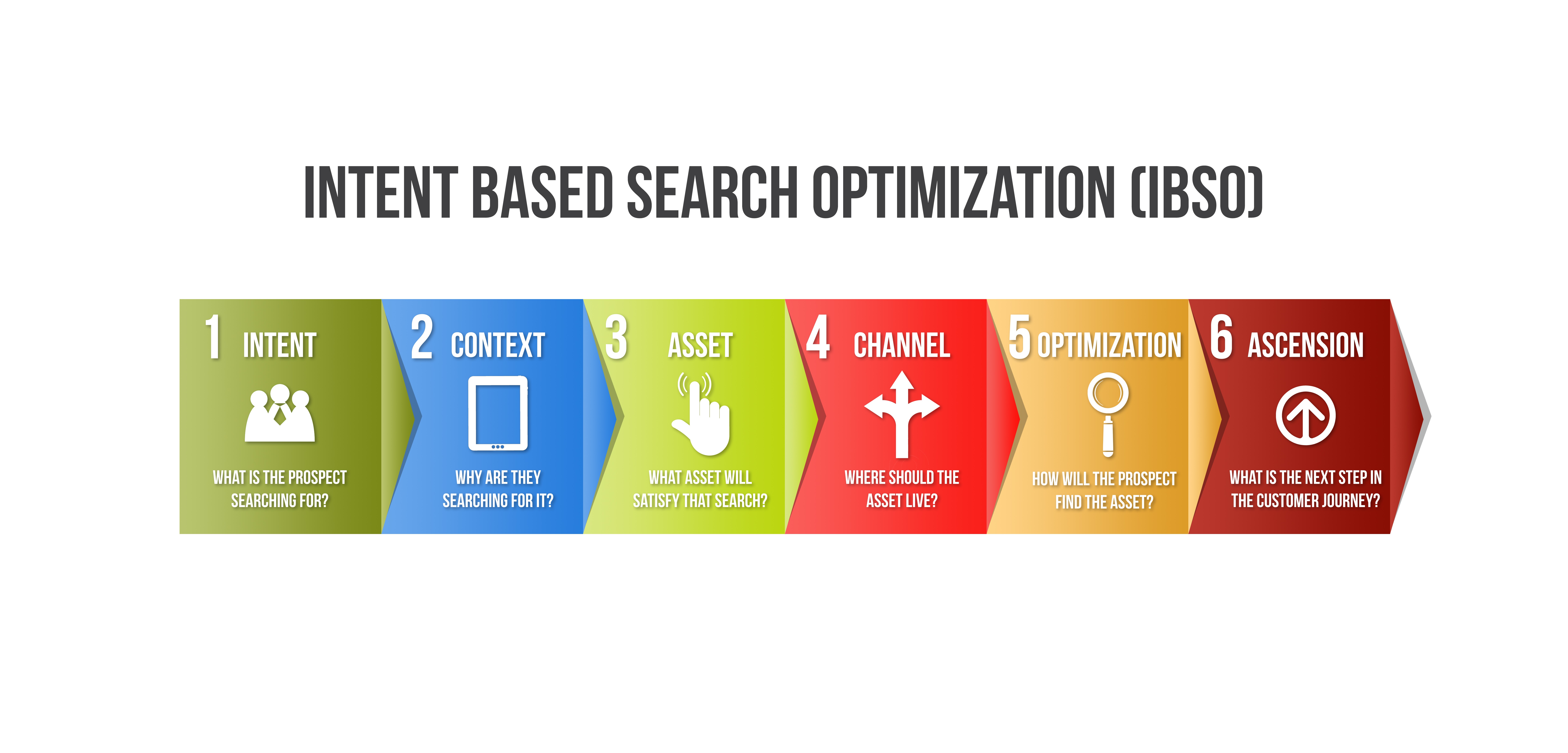3.5 billion per day…
… that’s how many searches Google processes every day.
The overarching goals of any search marketing activity are to ensure your brand is:
- Discoverable – Being found when people are NOT looking specifically for you (Non-branded Queries)
- Available – Being found when people are looking specifically for you (Branded Queries)
According to an economic report published by Google, businesses make an average of $2 in revenue for every $1 they spend on Google Ads.
In this post I am going share 7 tips to maximise your next search campaign.
But first, let’s look at the key benefits of pay-per-click campaigns for your business…
7 BENEFITS OF PAY-PER-CLICK CAMPAIGNS
- With pay-per-click campaigns you can get to the top of the page (almost immediately) for what your customers are searching for, without pouring time and money into Search Engine Optimisation (SEO)
[Note: SEO is important for any business. But it takes a lot of skill, time and effort]
- The result of being at the top of the search results that matter to you is that you reach highly motivated, ready-to-buy customers with your message or offers
- Unlike other channels and formats, you only pay for clicks to your website and you control how much you are willing to pay for that click, as well as your daily budget
- The targeting power of search platforms, like Google Ads and YouTube, is immense, especially for local businesses that need to target their specific geographic location
- You are in complete control of where you send your potential customers, what you offer them and how much you pay to do it. We recommend sending your traffic to campaign landing pages, rather than your home page
- You can gain deeper insights into what your potential customers are searching for by leveraging Google’s free Keyword tools
- With powerful analytics you can track your Return on Ad Spend (ROAS) and deliver the good news to your boss as often as you like…
… and much more!
7 TIPS TO MAXIMISE YOUR PAY-PER-CLICK CAMPAIGNS
Now you can see the opportunity and the benefits of investing in Pay-Per-Click search campaigns, let’s look at how to maximise your investment
- Start with the maths
Before you spend a penny, understand the important metrics within your sales and marketing funnel.
This will help you plan for a positive ROAS.
A few questions to ask are:
- What is the goal of your campaign?
To drive traffic to your website? To generate leads, enquires or phone calls? Or if you are an e-commerce business, to drive sales?
- What is your cost to acquire that goal, sometimes referred to as Customer Acquisition Cost (CAC)? Check out this post to calculate your CAC
- What is the value of that goal? For example, if the goal is was generate a phone call, and 50% of calls result in a sale worth £100 then each call is worth £50
- Can I achieve a CAC that is lower that the value of my goal? If the answer is yes, then it’s time to invest. If not, evaluate if the value can be increased or the CAC can be reduced
- Leverage the power of remarketing
We often come across search accounts that are not taking advantage of remarketing.
Typically, a website, and therefore a search campaign, can expect to achieve a 2%-5% conversion rate.
So what happens to the other 95%?
Remarketing enables you to capture another few percentage points from the non-converters, stay in front of warm and hot audiences, and is extremely powerful for brand building.
You can also create remarketing campaigns across various platforms such as Google Search & Display, Facebook, YouTube and LinkedIn, meaning you can reach your hot audiences wherever they are.
- Exclude negative keywords to minimise wastage
Negative keywords are often overlooked and lead to wasted budget.
For example, if you are selling service management software you may use the phrase “service management software” but the word “free” will also trigger your ad for people searching for “free service management software”.
This will result in wasted budget as these people are looking for a free version of the software.
If you cannot think of negative keywords right now, allow your campaign to run for a period to gather enough data to see what keywords don’t produce your desired goal.
- Be relevant with dynamic keywords
Dynamic Keyword ads insert the keyword being searched into your ad copy, so it is highly relevant to the query and increases the chances of getting clicks to your website.
For example, let’s say you sell a wide range of shoes.
Rather than create multiple ads for each type of shoe, you can create a single ad with copy like “25% Off _____”, with dynamic keywords, such as “Tennis Shoes” or “Running Shoes”.
The keyword will then be dynamically inserted to match the searcher’s query.

- Optimise results with scientific split testing
Split testing is an effective way of seeing which ads and landing pages perform best, enabling data-driven decisions.
Often what we think is logical does not deliver the best results.
- Track conversions and report on your ROAS
Conversion tracking is essential to track your ROAS and enables you to make informed decisions when it comes to optimising your campaign.
Without conversion tracking decisions could be made based on other performance metrics, such as cost-per-click and traffic, leading to costly mistakes.
- Ad extensions
Ad extensions enable your ad to include more relevant links to various pages on your website which the end user might be looking for and take up more real estate on the Search engine results page.

By providing additional information, offers, discounts, sitelinks, locations, call extensions, reviews and app extensions, you can increase your click through rate and provide your audience with more relevant information.
BONUS TIP
To help get into the mind of your target audience and generate effective keywords and ad copy, develop your next search campaign to follow the IBSO (Intent Based Search Optimization) framework:

Source: www.digitalmarketer.com
- Intent
What is your potential customer searching for?
e.g. “I want to find a hotel in Belfast”
- Context
Why are they searching for it?
e.g. “To treat my wife for our anniversary”
- Asset
What asset will satisfy their search?
e.g. A search engine for hotel rooms, prices, availability
- Channel
Where should the asset be placed?
e.g. Could be the hotel website booking page itself, or a booking engine
- Optimization
How will your potential customer find the asset?
e.g. The page or asset is optimised for keywords, locations and the context of the query
- Ascension
What is the next step in your potential customers journey?
e.g. The page or asset is optimised for the booking, upsells, etc.
Hopefully this “brief” guide will help you maximise your next pay-per-click campaign.
Need some help? Let’s grab a coffee.
Click to message us or call Paul James on +44 (028) 9042 5344





